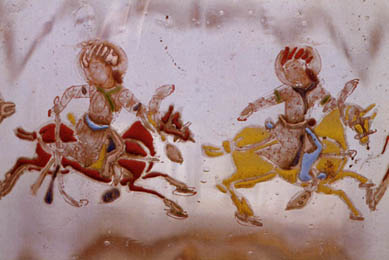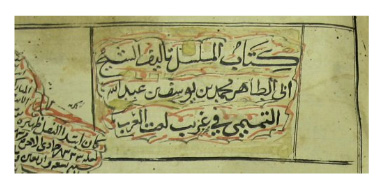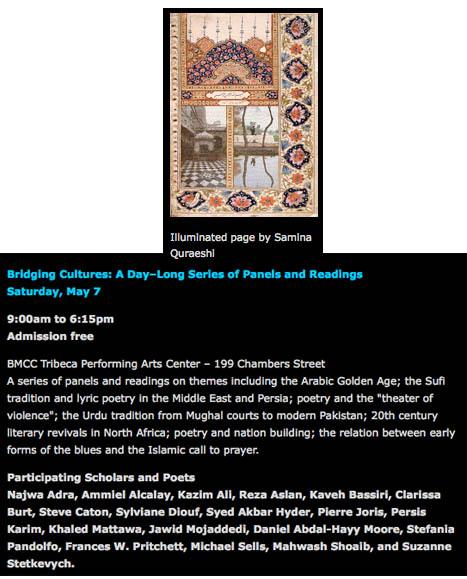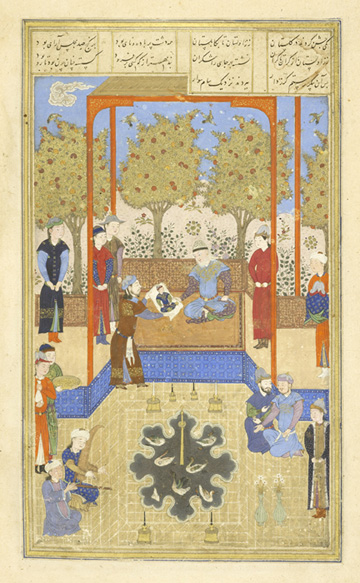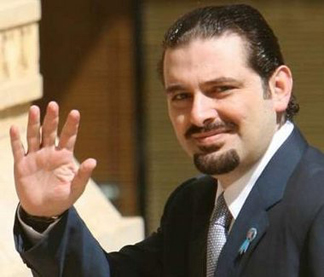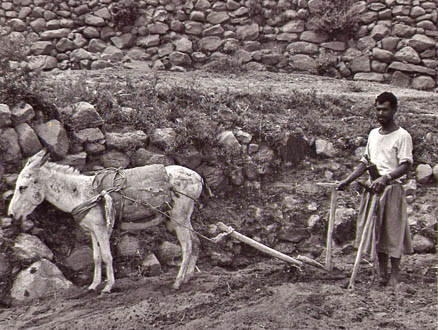
Yemeni tribal farmer in al-Ahjur, Central Highlands
By Daniel Martin Varisco
[In 2003 I attended a conference in Rome and gave a paper which was eventually published in Convegno Storia e Cultura dello Yemen in età Islamica, con particolare riferimento al periodo Rasûlide (Roma 30-31 ottobre 2003 (Accademia Nazionale dei Lincei, Fondazione Leone Caetani, 27, pp. 161-174, 2006). As this publication is virtually inaccessible, I am reprinting the paper here (with page numbers to the original indicted in brackets). For the previous part of this article, click here. The references are provided at the end of the first entry.]
VIEWING THE FIELD THROUGH AL-ASHRAF’S AGRICULTURAL TREATISE
I begin with al-Muẓaffar’s short-reigned son, al-Malik al-Ashraf YÅ«suf, whose treatise Milḥ al-malÄḥa not only defines the genre of Rasulid agricultural texts but is a primary source for the later, larger and more cosmopolitan Bughyat al-fallÄḥīn of al-Malik al-Afá¸al al-‘AbbÄs, which has been studied in part by the late Professor Serjeant. (5) Milḥ survives in at least two copies, both defective; one is in the Glaser collection in Vienna and the other was discovered in southern Yemen less than two decades ago by ‘Abd al-Raḥīm JÄzm. This consists of seven chapters. The first deals with the knowledge connected to times for cultivation, planting and preparing land. The next five chapters are arranged according to the type of crop or plant, with elaborate details on how each is cultivated. The final chapter, which has not yet been found apart from quotations in the Bughyat, discusses agricultural pests. The information provided on crops is almost exclusively for Yemen, unlike the penchant of the later Bughyat’s author to quote extensively from earlier non-Yemeni sources such as Ibn Waḥshiya and Ibn BaṣṣÄl. Indeed, there is no explicit mention of other texts in Milḥ.
After the obligatory salutation of thanks, al-Ashraf begins his treatise with a poetic quatrain:
Fa-hÄdhÄ kitÄb jama‘atuhu bi-ḥasab al-á¹Äqa wa-al-ijtihÄd
wa-ista‘tab ‘alÄ dhÄlik bi-rabb al-‘ibÄd.
Waá¸a‘tuhu ‘alÄ á¸¥ukm iá¹£á¹ilÄḥ ahl al-ma‘rifa fÄ« al-Yaman
ba‘d al-baḥth ma‘ahum fÄ« kulli mÄ fÄ«hi min á¹£anf wa-fann.
[p. 164] “I compiled this book according to diligence and capability
and solicit for proof of this the Lord of all humanity.
I recorded it from the wise practice of those Yemenis who know
only after research among them for all that is within their classifying and artful show.â€
Continue reading The State of Agriculture in Late 13th Century Rasulid Yemen, #2
